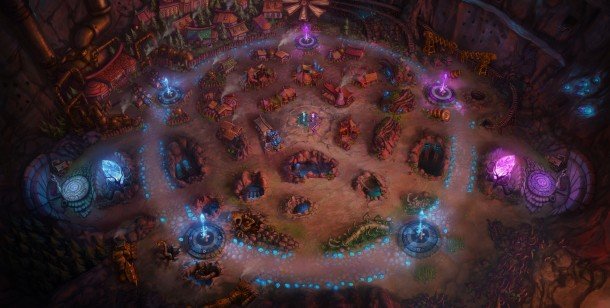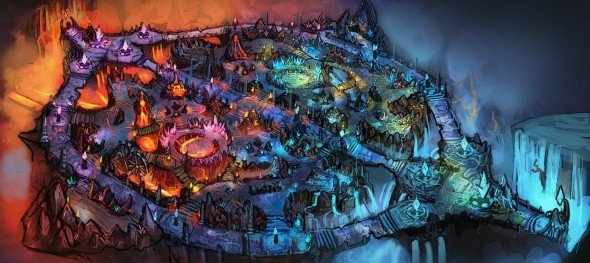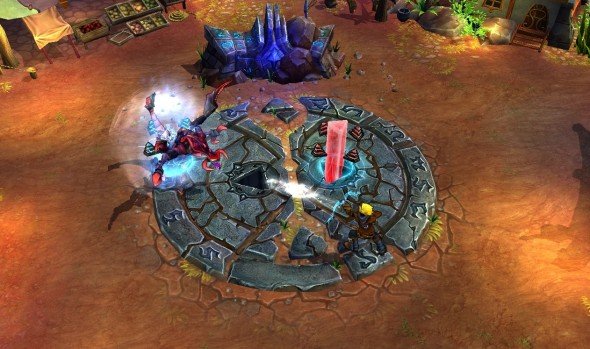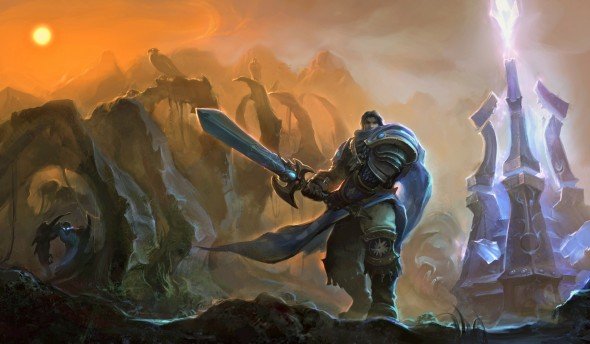League of Legends Dominion post-mortem: parts of the development process were "painful"

As you might guess, designing an entirely new mode for any game is not easy. Doing so for a playerbase who's only ever known one gametype is even more of an undertaking. League of Legends ' lead producer Travis George gave a heartfelt talk at a GDC post-mortem panel yesterday, where he delved into the complex processes that produced LoL's biggest update since launch. Magma Chamber, Project Shiny, the Crystal Scar, and everything in between were illuminated, and in the process, so were many of Riot Games' core philosophies and design strategies. But Dominion's capture-point gameplay was also one of the toughest hurdles that Riot's faced yet, and the path to making it was hardly perfect.
George emphasized the Riot Games mission statement right off the bat: "be the most player-focused game company in the world." With a staggeringly fast growth in both the game's community and popularity, Riot recognized early on that it would be in their best interest to please the fans who were clamoring for a new map. Quickly glossing over Twisted Treeline (which Riot doesn't seem particularly happy with), George brought up the map which PC Gamer teased over a year ago: Magma Chamber. Summoner's Rift had already perfected the back-and-forth balance of "push gameplay," where minions mindlessly march towards the enemy and only champions can turn the tides. "[We wanted to design] a map that cuts out the laning phase," George said; the solution was the "meaty" new map of Magma Chamber. But despite the difference in layout, Magma Chamber was still a three-lane, push gameplay experience: "At it's core, Magma Chamber was still classic League of Legends," George said— "fundamentally, they were not that different." Riot wanted to deliver the maximum value for players, and that meant devising an entirely different mode.
"We wanted to create a whole new experience for our players," George said. "We love the MOBA genre, and we think it's [still] in its infancy. There's so much room for awesome, fun gameplay in this space, and instead of spending all this effort to make a very similar experience, why don't we spend a little more effort to [try and innovate] this space?" Magma Chamber was set aside, and Project Odin (which would later become Dominion) was birthed, backed a new team which was manned by "unconventional problem solvers" and "collaborative, but challenging thinkers."

But the production process for Dominion was littered with obstacles. With a schedule that prioritizes a new champion release every two weeks, Riot had to develop Dominion without disrupting the work cycle that was already in place. The multitude of teams working of LoL had to be prepped for a radically different development pipeline, and all the while, the live servers still had to be maintained. On top of all this, tweaks needed to be made on the programming side of things. "We actually had to build tools for Dominion, while we were building Dominion," George said. In developing modified AI for the minions, so that they would properly assault enemy capture points, the team discovered that the existing code didn't even allow minions to properly walk backwards. Cue the Michael Jackson .gif mocking the minions' new moonwalking capabilities.
The core mechanics of Dominion also went through a massive amount of design iterations. Dominion, as it exists now, involves capturing five points around the map by channeling into a gem that designates your control over that point. "We thought that it would be really cool if you could blow up capture points with a bomb," George recalled. In a process that mirrored Counter-Strike, champions could plant a bomb at a point, then defend it until it successfully detonated. But George put it simply when he explained why this didn't work: "it's fun to fight stuff with champions and use your abilities. When you're [forced to] carry a bomb around, it's not very fun." There was also the thought of having Baron Nashor, SR's resident big boss, planted squarely in the middle of the map. Sadly, this stationary monster didn't make much sense when the objective was capturing points that were nowhere near him.
The iterations didn't stop there: "At one point on the Dominion map, we thought it would be awesomely excellent to have a bunch of wandering monsters," George said. These ended up being cumbersome—breaking off from your teammates to fight one would get you yelled at and/or killed, and seeing the one with the buff you wanted across the map was more annoying than enticing. This system was eventually changed to the existing Quest system, which does a good job of directing players towards points that need capturing. Designing the wandering monsters' AI also acted as the seed that would eventually grow to be the entire Co-Op vs. AI mode.

George then explained the biggest hardship that the team faced during Dominion's development: its connection with Project Shiny. As PCG readers will remember, Project Shiny was a separate project that was built to overhaul LoL's graphics, improving them texture-and-model-wise to look better on faster rigs. As George puts it, "[We viewed Project Shiny as] an opportunity to sharpen LoL's graphical fidelity." In a decision that George ultimately regrets, the teams who were working on Project Shiny and Dominion were combined mid-development. The hope was that their combined efforts would synergize, and that the end result would be all the more impressive. But George recalls that it created a sort of production "Frankenstein's Monster"; where the Dominion team had rapid iterations and unknown variables, the Project Shiny team was working mainly on SR and demanded a finalized map of the Crystal Scar. The differences in process created tension between the teams, and at one point, Dominion was done while Shiny (which George described as an "albatross") was totally stalled.
The biggest gaming news, reviews and hardware deals
Keep up to date with the most important stories and the best deals, as picked by the PC Gamer team.
Something had to be done. George seemed to blame himself for the mismatch and goal discrepancies between teams, so he took it upon himself to make a hard call: separate Dominion and Project Shiny, which had been tightly linked for months, into two detached entities. "All the code, all the processes, all the art pipeline, they were all tied together," George said. "Through the decision that I made by not looking at the objectives and values of each of the teams, I cost the teams man-months worth of work to do this. And it was painful." The entire tech team had to spend weeks pulling apart lines of code to rip Dominion off of Project Shiny. "That was really painful for me. It was a morale hit to the team, and a huge downer for the whole project—but ultimately, we had to do that, and I had to admit that mistake [so that Dominion could move forward]," George said. It was clear that these decisions weren't made lightly.

But all's well that ends well. Dominion's launch was a bit of a happy surprise, where a weeks-long release schedule was reduced to a span of three days. Due to the 20-minute length of Dominion games versus SR's ~40 minutes, loadtests revealed that the servers would be slammed if twice as many games were being created—"Starting a game is an expensive process," George explained. But with a live beta test, the Platforms and Operations teams at Riot found that the measures they'd taken to smooth out the launch were performing better than expected, and Dominion was fully launched three days later, around the end of September 2011. All in all, Dominion's project length was 12 months total, with nine months of development, and the team grew from seven members to a whopping 40.
Hearing George talk, you got the sense that Riot takes great pride in their flagship creation, and when something goes wrong, they take it to heart. But in my opinion, Dominion was a huge success—it gave me a game mode that I could play during a lunch break, instead of committing 40 minutes and the concentration required for early laning. While fielding questions from the enraptured audience, George made a sports analogy that I can get behind: "We think of [League of Legends with this philosophy]: LoL isn't a content grinder of going through a bunch of maps; it's 'create a really deep, replayable experience on one field.' If Summoner's Rift is basketball, and the gameplay is 'who do you put on the court, what items do you build, what's the team composition of who you're playing against,' we didn't want to go and make basketball on a different field—we wanted to make [Dominion an entirely different] game like soccer." Though I can appreciate the skills of basketball pros, sometimes I'd just rather play a round of soccer.

